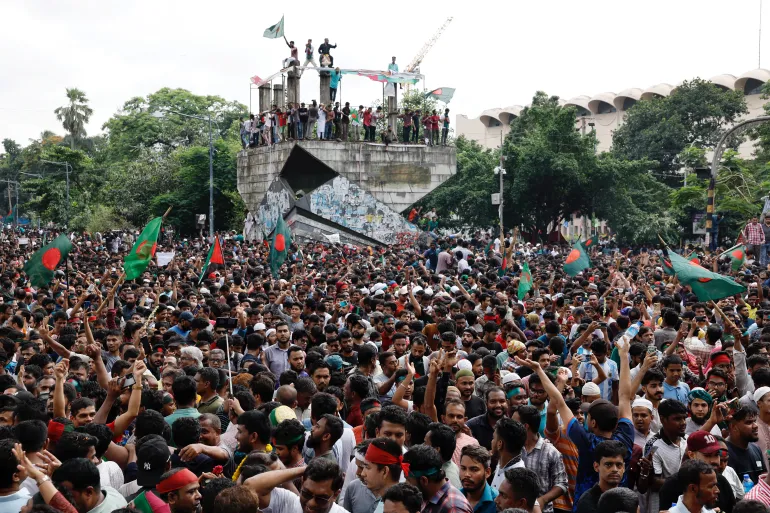A Region on the Brink: Escalation Sparks Global Fear.
Table of Contents

The Middle East is teetering on the edge of a major conflict as Israel and Iran exchange devastating blows, leaving dozens dead and hundreds injured. On June 13, 2025, Israel launched a surprise offensive against Iran, targeting its nuclear facilities, military bases, and the world’s largest gas field. Iran retaliated with missile and drone attacks on Israeli cities, killing at least nine and wounding over 300. As air raid sirens wail and families seek shelter, the world watches anxiously, fearing an all-out war. Amid the chaos, U.S. President Donald Trump has taken a dual stance: warning Iran of unprecedented military force if it targets U.S. interests while insisting a diplomatic deal could end the bloodshed. This blog dives into the latest developments, the human toll, and what’s at stake for the region and beyond.
The Latest Blows: A Weekend of Violence
The conflict intensified overnight into Sunday, June 15, 2025, with both sides unleashing fresh attacks. Israel expanded its campaign, striking Iran’s Shahran oil depot, an oil refinery near Tehran, and the defense ministry building, causing minor damage but sparking fires ([Tasnim News]). Iran responded with a barrage of missiles and drones starting at 11:00 p.m. Saturday, targeting Jerusalem, Haifa, and Tel Aviv. By 2:30 a.m., another wave of missiles prompted Israel’s military to urge a million people into bomb shelters ([The Guardian]). Explosions lit up the skies as Israel’s Iron Dome intercepted many projectiles, but some broke through, leveling buildings and claiming lives.
In Israel, at least seven people died overnight, including a 10-year-old boy and a woman in her 20s. A strike in Bat Yam, south of Tel Aviv, hit an eight-story building, leaving 35 people missing and multiple fatalities ([Israeli media]). Emergency services reported over 140 injuries, with search teams combing rubble using flashlights and dogs. Since Iran’s retaliation began on Friday, nine Israelis have been killed and over 300 injured.
In Iran, the toll is even graver. Tehran reported 78 deaths on the first day of Israel’s strikes, with scores more on Saturday, including 60 people—29 of them children—killed when a missile collapsed a 14-story apartment block in Tehran ([Iran’s UN envoy]). The strikes also killed six senior military commanders and key nuclear scientists, crippling Iran’s leadership.
Trump’s High-Stakes Diplomacy: Threats and Hope
President Donald Trump has emerged as a central figure in the crisis, balancing tough rhetoric with calls for peace. On Sunday, he posted on Truth Social, warning Iran that any attack on U.S. interests would trigger a military response “at levels never seen before” ([The Guardian]). Yet, he insisted the U.S. had no role in Israel’s overnight strikes and claimed a deal to end the conflict is within reach: “We can easily get a deal done between Iran and Israel, and end this bloody conflict!!!” ([Truth Social]).
Trump’s approach reflects months of effort to broker a nuclear deal with Iran. He issued a 60-day ultimatum in April 2025, urging Tehran to curb its uranium enrichment or face consequences ([CNN]). Despite progress in talks, Iran canceled a scheduled meeting in Oman on Sunday, citing Israel’s “barbarous” attacks ([Al Jazeera]). Trump called the strikes “excellent” but framed them as a “second chance” for Iran to avoid further destruction, urging a sharp downgrade of its nuclear program ([ABC News]). However, Iranian Foreign Minister Abbas Araqchi declared dialogue “meaningless” under attack, leaving diplomacy in limbo.
The U.S. role remains murky. While Secretary of State Marco Rubio denied direct involvement, U.S. officials confirmed providing “exquisite” intelligence to Israel and helping intercept Iranian missiles ([ABC News]). Trump admitted to knowing Israel’s plans, raising questions about his earlier calls for restraint ([Reuters]). The U.S. has moved warships and air defenses to the region to protect its troops and Israel, signaling readiness for escalation ([The New York Times]).
The Targets: Israel’s Strategic Assault
Israel’s operation, dubbed “Rising Lion,” began Friday with 200 aircraft striking over 200 targets, including Iran’s Natanz and Fordo nuclear facilities, which suffered “significant damage” ([Israeli military]). The attacks also hit the South Pars Gas Field in Bushehr, the world’s largest, disrupting Iran’s energy supply ([BBC News]). Military bases in Tehran, Kermanshah, and Khuzestan were targeted, with radar systems and missile launchers destroyed to weaken Iran’s defenses.
Israel’s Mossad played a crucial role, smuggling drones and precision weapons into Iran to disable key infrastructure ([Israel Hayom]). The strikes killed top figures, including General Mohammad Bagheri (armed forces chief), General Hossein Salami (IRGC leader), and General Amir Ali Hajizadeh (missile program head), alongside nuclear scientists ([Iran’s Armed Forces]). Israeli Prime Minister Benjamin Netanyahu vowed to continue “for as many days as it takes” to prevent a nuclear-armed Iran, which he called an existential threat ([The Washington Post]).
Iran’s Retaliation: Operation True Promise III
Iran’s response, “Operation True Promise III,” began Friday with over 100 drones and hundreds of ballistic missiles ([Reuters]). The Islamic Revolutionary Guard Corps (IRGC) claimed to target Israeli airbases and weapons facilities ([The Hindu]). Despite Israel’s interception efforts, missiles struck residential areas, killing civilians and causing widespread damage. Iran’s Supreme Leader, Ayatollah Ali Khamenei, promised “harsh punishment,” and state media warned of more attacks ([Tasnim News]). Tehran’s airports suspended flights, and non-essential workers shifted to remote work, reflecting the crisis’s severity.
Global Alarm: A World Responds
The international community is scrambling to contain the crisis. The U.N. Security Council held an emergency meeting at Iran’s request, with the IAEA confirming no radioactive leaks from damaged nuclear sites ([The Washington Post]). China condemned Israel’s “violations” of Iran’s sovereignty, while Russia’s Vladimir Putin, after a 50-minute call with Trump, offered to mediate ([LiveMint]). Iran’s allies, like Hezbollah and Hamas, condemned the strikes but refrained from joining, cautious after recent losses ([Al Jazeera]). Yemen’s Houthis, however, launched missiles at Israel in coordination with Iran, marking a rare joint operation ([The Guardian]).
Why Now? A Decades-Long Feud
This clash builds on years of hostility. Israel has targeted Iran’s proxies, like Hezbollah, while Iran has struck Israeli interests in Syria. The Gaza war, sparked by Hamas’ October 2023 attack, and Israel’s 2024 strikes on Iranian targets escalated tensions. Iran’s nuclear program, censured by the IAEA on June 12, 2025, is a key flashpoint ([NPR]). Israel fears a nuclear-armed Iran, while Tehran insists its program is civilian. Trump’s failed nuclear talks, coupled with Israel’s intelligence on Iran’s enrichment advances, triggered the strikes ([CNN]).
The Stakes: What’s at Risk?
The conflict threatens far-reaching consequences:
- Regional War: Escalation could draw in the U.S., Russia, or Gulf states, with Iran hinting at targeting U.S. bases ([X posts]).
- Energy Markets: Attacks on Iran’s gas and oil facilities could spike global oil prices by 10-15%, impacting economies worldwide ([Reuters]).
- Human Toll: Civilians in both nations face rising casualties, with families displaced and infrastructure in ruins.
- Diplomacy: Stalled nuclear talks reduce chances of a peaceful resolution, hardening Iran’s stance ([Al Jazeera]).
In Israel, civilians stockpile supplies, and schools are closed. In Iran, power cuts and economic strain could spark unrest. The region’s stability hangs in the balance.
Looking Ahead: Peace or War?
Trump’s push for a deal faces steep challenges. Iran’s leadership, weakened by losses, may resist concessions, while Israel’s relentless campaign aims to force Tehran’s hand. Netanyahu’s hope that the strikes could topple Iran’s regime seems ambitious, given Khamenei’s swift appointments ([The New York Times]). A prolonged conflict risks exhausting both militaries, with Israel relying on aging equipment and Iran facing sanctions-induced shortages.
The world awaits Iran’s next move. Will it launch another wave of attacks, or could international pressure revive talks? Trump’s warning of U.S. military might underscores the risk of American involvement, which his base opposes ([Al Jazeera]). The coming days will shape the Middle East’s future.
Join the Conversation
What do you think about Trump’s approach? Can a deal stop this conflict, or is war inevitable? Share your thoughts below and let’s discuss the path forward.
Disclaimer: This article is based on reported events and aims to inform, not advocate. The views expressed do not reflect the opinions of this publication.
Sources: BBC News, The Guardian, Reuters, Al Jazeera, The New York Times, The Washington Post, ABC News, CNN, NPR, Israel Hayom, Tasnim News, The Hindu, LiveMint, PBS News, Politico, The Atlantic,




